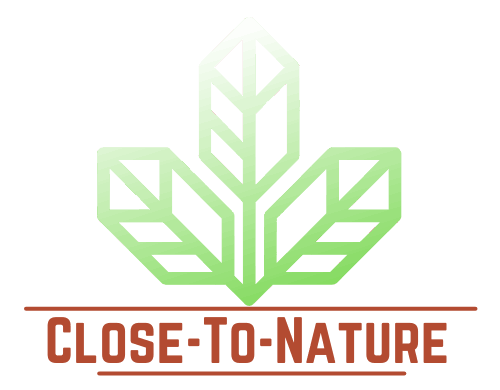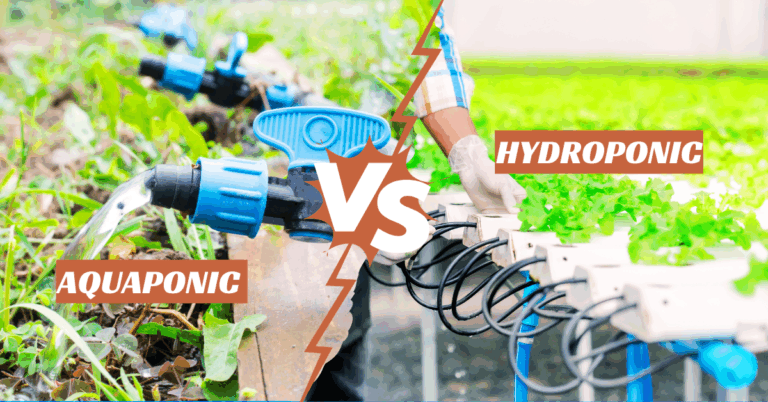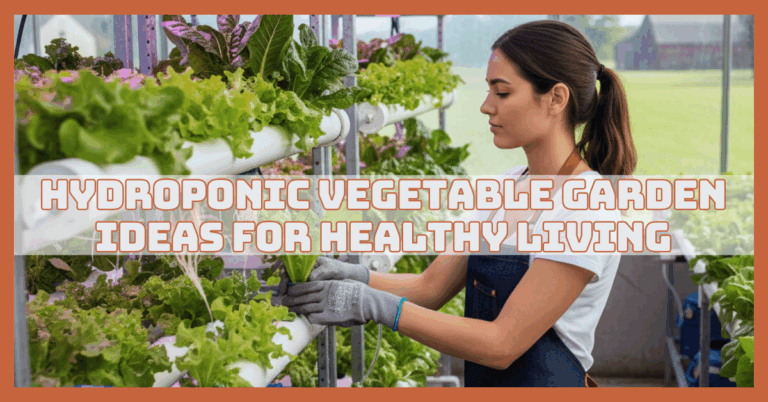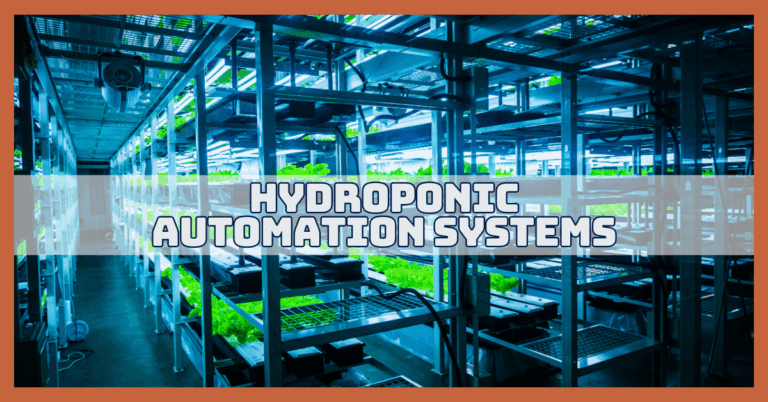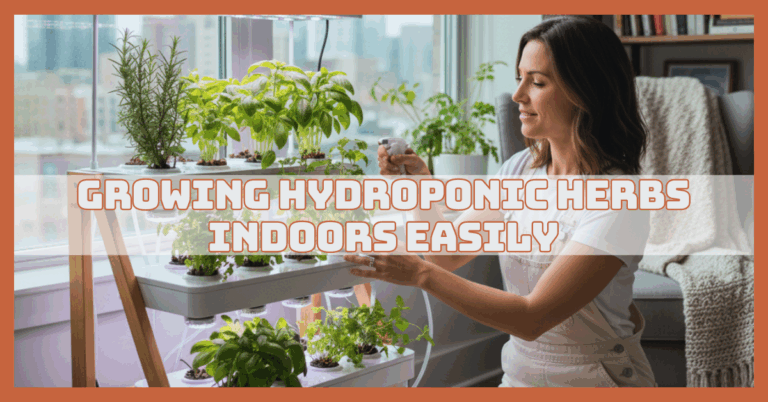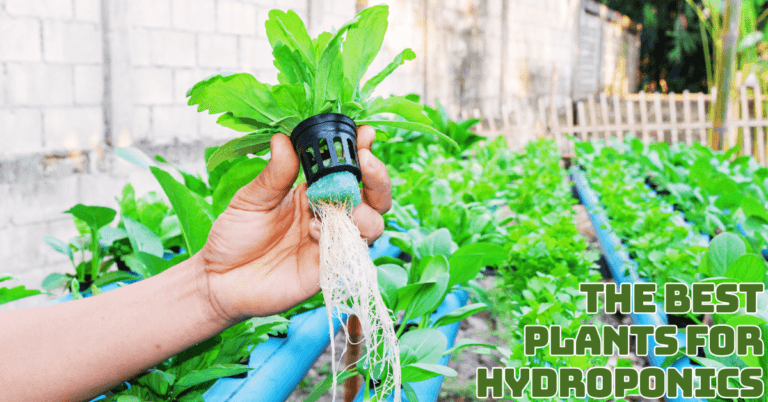Hydroponic Farming vs Vertical Farming
Hydroponic farming and vertical farming are two innovative approaches revolutionizing modern agriculture.
Hydroponic Farming vs Vertical Farming highlights how both techniques transform modern agriculture by maximizing space, conserving resources, and promoting sustainable food production.
While hydroponics emphasizes growing plants without soil using nutrient-rich water, vertical farming takes this concept further by stacking crops in layers.
This article explores their key differences, benefits, and challenges to help you understand which farming method best suits your goals.
What Is Hydroponic Farming
Hydroponic farming is a modern way to grow plants without soil. Instead of using traditional farmland, plants are grown in nutrient-rich water.
The roots are suspended in a liquid solution that provides all the essential minerals they need to grow strong and healthy.
This system allows plants to absorb nutrients directly, speeding up their growth and increasing yield. It’s clean, efficient, and surprisingly easy to control.
What makes hydroponic farming fascinating is how flexible it is. You can grow lettuce, tomatoes, herbs, or even strawberries indoors—all year round.
Because the system recycles water, it uses up to 90% less water than conventional farming. Furthermore, because there is no soil, fewer bugs and illnesses exist, requiring fewer pesticides.
Hydroponic setups come in many forms, from small home systems to massive commercial farms. They thrive in cities, on rooftops, or even in unused warehouses.
For people looking to grow food sustainably in limited spaces, hydroponic farming is a game-changer. It’s the future of agriculture—efficient, eco-friendly, and beautifully innovative.
What Is Vertical Farming
An innovative approach to agriculture is vertical farming, which grows crops in stacked levels as opposed to being dispersed over level areas.
Imagine shelves of leafy greens and herbs growing indoors under controlled conditions—like a futuristic garden reaching toward the sky.
This method creates the ideal atmosphere for plants to flourish by utilizing cutting-edge technology, including automatic watering systems, temperature controls, and LED lights.
What’s impressive about vertical farming is its efficiency. Because it uses vertical space, it can produce more food in much less land—perfect for crowded cities.
It also reduces water use by up to 95% compared to traditional farming. Since it’s done indoors, farmers don’t have to worry about bad weather, pests, or soil problems. The result? Fresh, healthy crops all year long.
Vertical farms are often built in urban areas, which means the produce can reach consumers faster and fresher. It’s clean, sustainable, and incredibly space-smart.
For the future of food production, vertical farming represents innovation at its finest—turning walls and warehouses into green, productive ecosystems.
Pros Of & Cons Of Hydroponic Farming
Pros Of Hydroponic Farming
1. Saves Water
Hydroponic farming reduces water use by up to 90% because water circulates through the system instead of being absorbed and lost in soil.
Plants grow in mediums like coco coir, perlite, or rock wool. Setup involves reservoirs, pumps, tubing, and nutrient solutions.
Small home systems cost $50–$200, while commercial setups may exceed $1,000. Ideal users include urban farmers, schools, and research centers. Recycling water decreases wastage and makes the system sustainable.
Users benefit from efficient water management and environmental friendliness. Minimal maintenance and monitoring ensure consistent growth without excessive water usage.
Key Points
- Uses a lot less water than conventional soil gardening.
- Recycles water continuously for maximum efficiency
- Ideal for urban and small-space environments
- Reduces dependency on rainfall or external water sources
2. Faster Plant Growth
Hydroponic plants grow faster because nutrients are directly available to the roots. Controlled environments optimize pH, oxygenation, and nutrient absorption, accelerating development.
Setup requires grow trays, pumps, nutrient reservoirs, and optional LED lighting for indoor systems. Users include home growers, researchers, and commercial farms.
Entry-level systems cost $100–$500, while larger farms reach thousands of dollars. Faster growth allows more harvest cycles per year, increasing productivity and profitability.
Plants are healthier, with fewer growth limitations, than soil-based cultivation. Users can monitor and adjust nutrients for maximum efficiency. Hydroponics is ideal for fresh produce production with predictable, accelerated timelines.
Key Points
- Nutrients directly feed roots for faster growth
- Optimized pH enhances nutrient uptake efficiency
- Controlled environment accelerates overall plant development
- Increases harvest frequency and crop yield reliability
3. Space Efficiency
Hydroponic farming allows dense planting and vertical stacking, maximizing crop output per square foot. Systems can use vertical racks, grow trays, reservoirs, and pumps to conserve space.
Ideal users are urban farmers, apartment growers, and commercial greenhouses. Small DIY kits cost $100–$500, while industrial vertical farms require thousands.
Plants grow without soil, allowing rooftop or indoor setups in limited areas. Users benefit from high productivity on minimal land. Space-efficient designs are perfect for cities where land is expensive or scarce.
Hydroponics provides a sustainable solution for local food production, supporting both commercial and home growers efficiently.
Key Points
- Maximizes crop output in small spaces effectively
- Supports vertical and stacked planting systems
- Perfect for urban and indoor farming solutions
- Reduces reliance on ample agricultural land
4. Less Pest And Disease Risk
Hydroponic systems reduce soil-borne pests, fungi, and root diseases, limiting pesticide needs. Plants grow in clean water and sterile mediums like coco coir or rock wool.
Setup requires water tanks, pumps, tubing, nutrient solutions, and optional pH monitors. Users include home growers, schools, and commercial farms.
Entry-level kits cost $50–$300, while commercial farms may exceed $2,000. Reduced disease risk leads to healthier plants, higher yields, and safer crops. Controlled environments ensure nutrient and oxygen balance.
Users enjoy consistent quality produce without chemical exposure. This makes hydroponics ideal for edible crops, organic production, and sustainable farming practices.
Key Points
- Eliminates most soil-related pests and diseases
- Reduces dependency on chemical pesticides significantly
- Ensures healthier, safer plants consistently
- Controlled environments enhance crop growth reliability
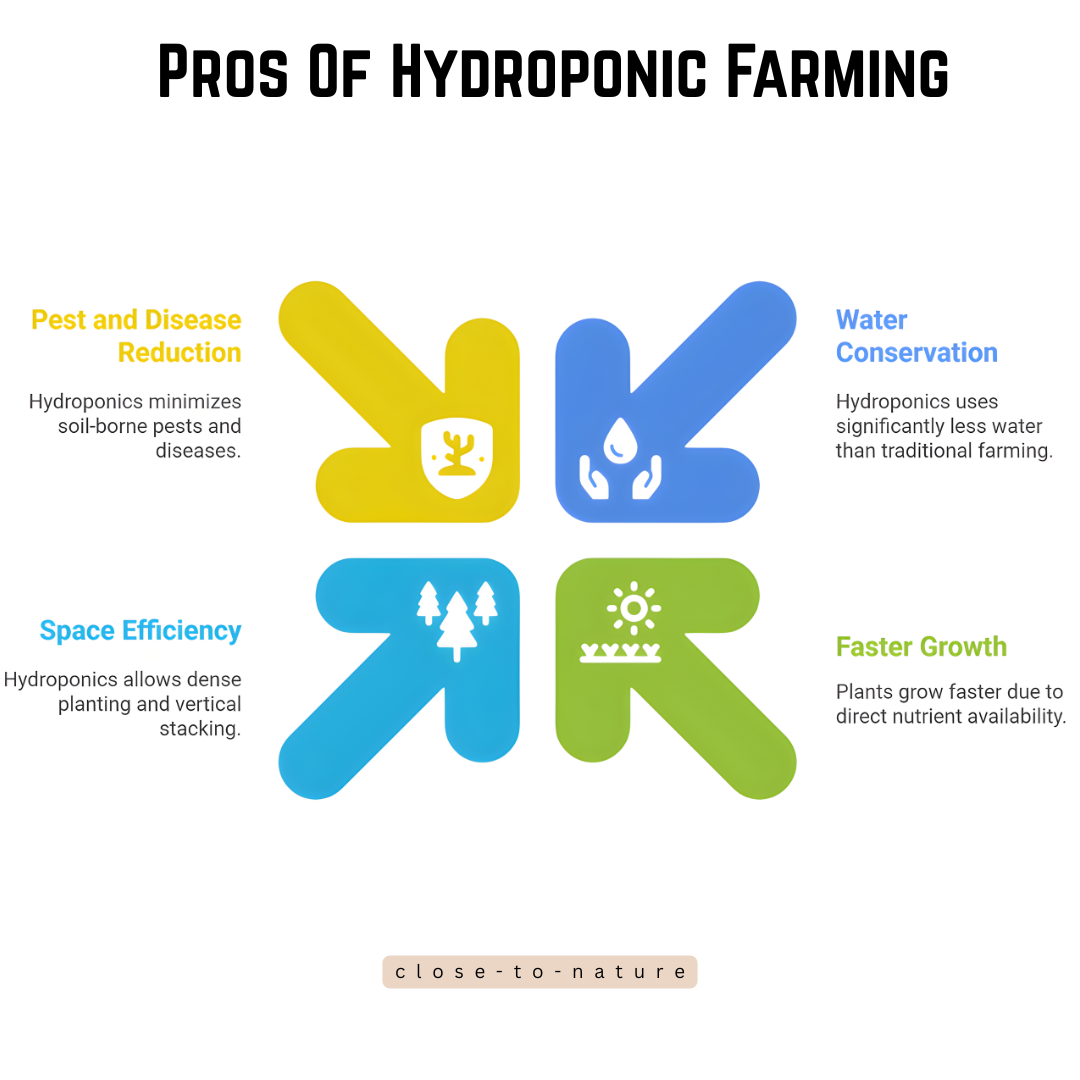
Cons of Hydroponic Farming
1. High Initial Cost
Hydroponic systems require significant upfront investment compared to traditional farming. Setup involves pumps, reservoirs, tubing, grow trays, nutrient solutions, and lighting for indoor systems.
Small home kits cost $50–$500, while commercial farms can reach tens of thousands. Users like hobbyists, urban farmers, or schools may find initial costs prohibitive.
Commercial growers must weigh long-term benefits against upfront expenses. Despite water and space savings, the capital needed for infrastructure, monitoring equipment, and climate control can be a barrier.
Budgeting carefully is essential, especially for large-scale operations. New users often start small to reduce financial risks before scaling up.
Key Points
- Requires substantial upfront investment and setup costs
- High-quality equipment increases the initial financial burden
- Commercial systems may cost thousands of dollars
- Small-scale users often face affordability challenges
2. Technical Knowledge Required
Hydroponics demands understanding nutrient solutions, pH balance, water circulation, and environmental control. Users without experience may struggle to maintain proper plant health.
Setup requires monitoring equipment, timers, pumps, and nutrient reservoirs. Hobbyists, urban farmers, and schools may need training or research to operate effectively.
Mistakes in nutrient dosing, lighting, or water management can harm plants. Learning curves can be steep for beginners. While tutorials and kits exist, professional guidance is often recommended for large-scale operations.
Users must constantly monitor growth conditions to avoid losses. Technical knowledge is critical for successful yields and maximizing the system’s benefits.
Key Points
- Requires understanding nutrients, pH, and environmental factors
- Mistakes can easily damage plants or yield
- Beginners face steep learning curves initially
- Monitoring and adjustments are critical for success
3. Energy Consumption
Hydroponic systems, primarily indoor or vertical setups, can consume significant electricity. Pumps, LED lights, climate control, and circulation systems require continuous power.
Users include urban growers, commercial farms, and research labs. Small systems cost $50–$500 upfront but have ongoing energy costs, while large operations spend hundreds monthly.
Energy usage increases if heating, cooling, or artificial lighting is needed year-round. Users must balance energy efficiency with crop yield. Solar panels or energy-saving devices can mitigate costs.
Electricity dependency may make the system less eco-friendly than anticipated. Careful planning of system size and energy use is essential for sustainable operation.
Key Points
- Continuous lighting and pumps increase electricity usage
- Climate control adds extra energy costs regularly
- Energy efficiency is critical for sustainability
- High consumption can affect overall profitability
4. Limited Crop Variety
Not all crops thrive in hydroponic systems; large or root-heavy plants like potatoes or corn are difficult. Setup involves shallow trays, nutrient solutions, and vertical racks optimized for leafy greens or herbs.
Users include urban farms, restaurants, and hobbyists. Small kits often suit lettuce, spinach, or basil, while commercial farms grow similar high-value crops.
Crops requiring soil or long root systems may underperform. Users seeking variety may need supplemental methods or hybrid approaches.
While hydroponics excels at fast-growing greens, its versatility is limited compared to traditional soil farming. Crop selection must consider plant type and system design carefully.
Key Points
- Best suited for leafy greens and herbs
- Root-heavy crops often underperform in hydroponics
- Crop selection is limited by system design
- Not ideal for all traditional farm crops
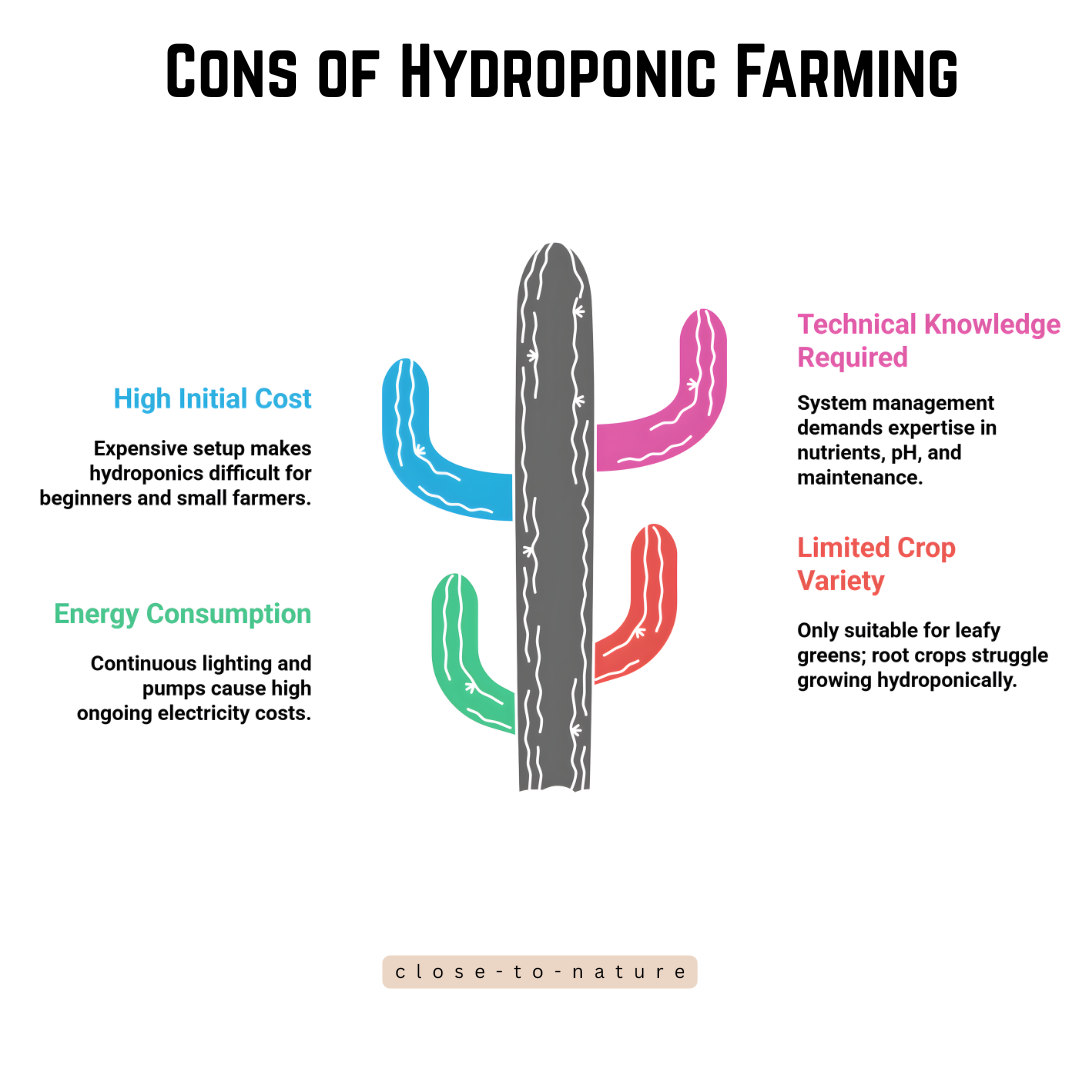
Pros & Cons Of Vertical Farming
Pros Of Vertical Farming
1. Maximizes Space Utilization
Vertical farming grows crops in stacked layers using hydroponic or aeroponic systems, maximizing limited space. The setup includes shelving units, LED lighting, pumps, and water reservoirs.
It’s ideal for urban farmers, commercial growers, and indoor gardeners. Home systems start around $100–$500, while commercial setups can cost thousands.
This method enables high productivity even in small apartments or warehouses. By using vertical layouts, more crops grow per square foot, reducing land dependency.
It’s perfect for cities facing space constraints. Users benefit from year-round cultivation and efficient land use without traditional farmland requirements.
Key Points
- Increases crop yield in minimal space
- Ideal for urban and indoor farming
- Uses stacked layers for efficient growth
- Reduces the need for ample agricultural land
Turn Your Passion for Nature Into Income
🌿 Whether you love gardening, caring for animals, or exploring holistic living,
You can share your knowledge online and earn from it.
Discover how nature lovers are growing their passions into meaningful, income-generating blogs. 👇
2. Year-Round Crop Production
Vertical farms operate indoors, using artificial lighting and climate control to maintain perfect growing conditions all year. Setup requires LED lights, automated irrigation, sensors, and temperature regulators.
Users include commercial farms, restaurants, and urban growers. Small indoor units cost $300–$800, while large automated farms cost thousands.
This method eliminates dependency on seasons and weather, ensuring a steady produce supply. Year-round production supports food security, consistent revenue, and reduced import needs.
Controlled environments also reduce crop loss due to drought or pests. Farmers can plan harvest cycles efficiently to meet constant demand in local and global markets.
Key Points
- Enables continuous farming regardless of seasons
- Controlled environments ensure steady plant growth
- Provides consistent harvest and supply chain stability
- Improves food availability throughout the year
3. Reduces Water Usage
Up to 90% less water is used overall when vertical farming is done using hydroponic or aeroponic systems that recycle water. Setup involves water tanks, pumps, nutrient solutions, and growing trays.
Users include eco-conscious growers, urban farms, and sustainable agriculture startups. Basic systems cost $100–$400, while advanced water-recycling models exceed $1,000.
The closed-loop design ensures minimal waste as unused water is filtered and reused. This system is ideal for regions facing drought or limited water supply.
By conserving water, vertical farming promotes environmental sustainability and reduces operational costs over time. Users enjoy efficiency and eco-friendly practices in modern food production.
Key Points
- Uses up to 90% less water than soil farms
- Recycles and reuses water efficiently
- Ideal for water-scarce and drought-prone areas
- Promotes sustainability and environmental conservation
4. Reduced Transportation And Emissions
Food can travel a shorter distance from farm to consumer by establishing vertical farms near cities. Setup includes modular growing racks, LED lighting, and climate systems in urban warehouses or buildings.
Users include city-based farms, supermarkets, and local restaurants. Small setups cost $500–$1,000, while industrial operations require larger investments.
Locally grown produce reduces fuel use, packaging needs, and carbon emissions. Fresh vegetables can reach markets within hours of harvest, ensuring better quality and lower costs.
This proximity-based farming helps reduce environmental impact and strengthens local food systems. It’s ideal for sustainable urban development.
Key Points
- Produces food near consumers, reducing transport needs
- Cuts fuel use and greenhouse gas emissions
- Ensures fresher, higher-quality produce locally
- Strengthens local food networks effectively
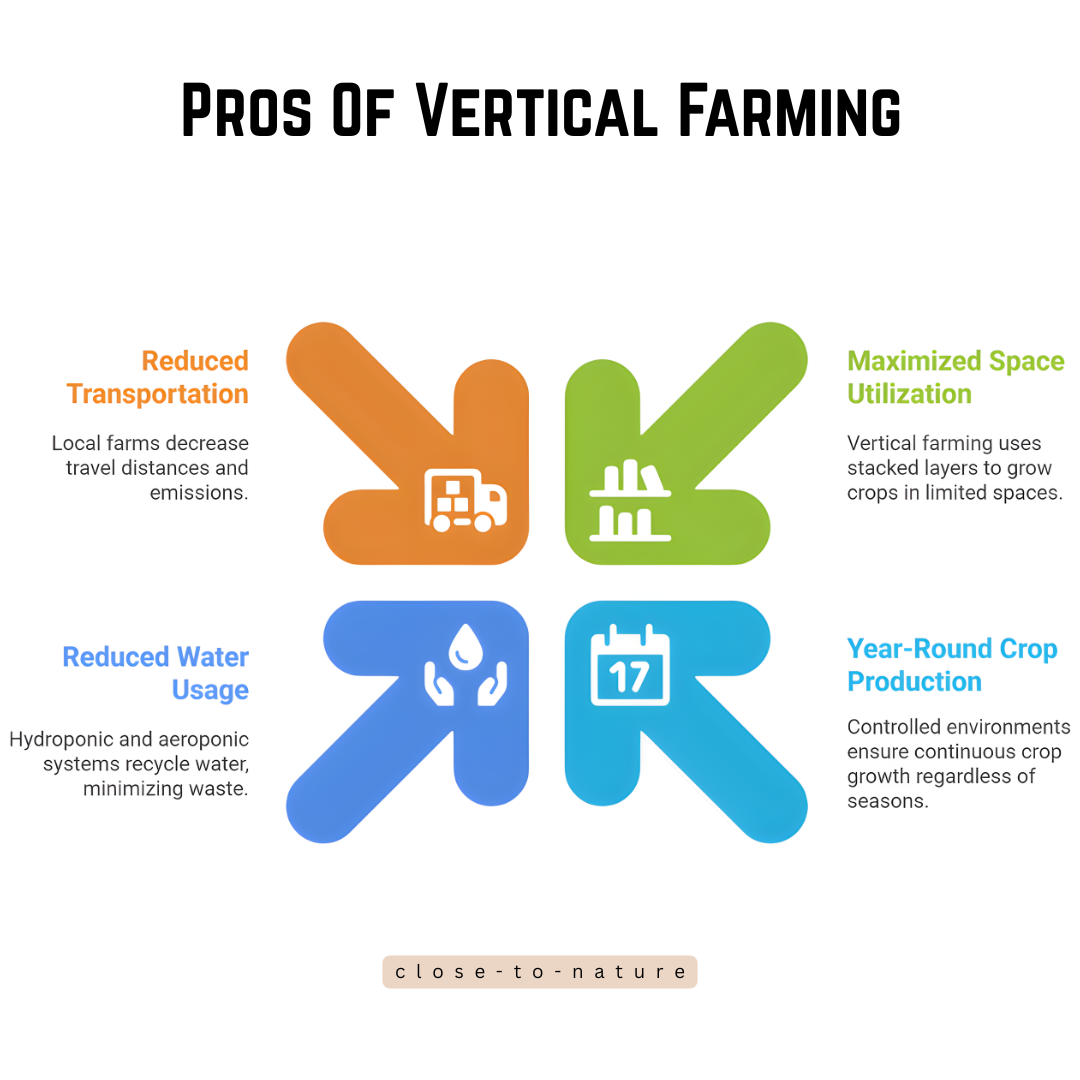
Cons of Vertical Farming
1. High Initial Investment
Vertical farming requires significant upfront costs for structure, lighting, irrigation, and climate systems. The setup includes LED lights, pumps, trays, water reservoirs, and sensors.
Users include commercial growers, startups, and research institutions. Small indoor setups cost around $500–$2,000, while large-scale farms may exceed $100,000.
The high expense comes from automation, energy-efficient lighting, and controlled environments. For beginners, initial costs can be discouraging despite long-term benefits.
Investors must carefully calculate returns based on market demand and crop value. While the investment pays off over time, financial risk remains high during the early stages of operation.
Key Points
- Requires costly lighting, pumps, and infrastructure setup
- High-tech automation increases the initial financial burden
- Long-term profit depends on careful ROI planning
- Small growers face affordability and funding challenges..
2. High Energy Consumption
Vertical farming depends heavily on artificial lighting, ventilation, and water circulation, leading to high energy use. LED lights, fans, and sensors operate continuously to maintain ideal growth conditions.
Users include urban farms and commercial growers. Small systems may consume minimal energy, but large-scale operations face significant monthly electricity bills. Costs rise further when climate control is required.
Renewable energy options like solar panels can reduce dependency but add upfront costs. Effective energy management is essential for sustainability and profitability.
Without efficient energy solutions, power consumption may outweigh environmental benefits and increase overall operational costs significantly over time.
Key Points
- Continuous lighting and ventilation require heavy electricity use
- Energy costs reduce profit margins substantially
- Renewable energy can offset, but it adds cost
- Efficient management is crucial for sustainable farming
3. Technical Complexity
Vertical farming involves sophisticated automation, monitoring systems, and environmental controls. Users must understand lighting cycles, nutrient delivery, humidity, and temperature management.
Setup requires hydroponic or aeroponic systems, sensors, and smart controllers. Hobbyists, startups, and urban farmers often face steep learning curves.
Small setups may cost $500–$1,000, while advanced systems use software-based automation exceeding $10,000. Errors in calibration, lighting, or nutrient balance can lead to plant loss. Proper training and maintenance are essential for success.
Technical expertise becomes vital to operate systems efficiently, making it challenging for beginners without prior agricultural or engineering experience to sustain production effectively.
Key Points
- Requires advanced knowledge of automation and system control
- Mistakes can lead to crop failure or waste
- Maintenance and calibration demand consistent attention
- Beginners face steep technical learning barriers
4. Limited Crop Selection
Not every crop suits vertical farming. Systems favour lightweight, fast-growing plants like lettuce, spinach, and herbs. Root-heavy or tall crops like corn or potatoes are unsuitable.
The setup includes hydroponic trays, LED lighting, and vertical racks optimized for greens. Users include urban farms, restaurants, and produce suppliers. Small systems cost around $300–$800, while commercial ones exceed $10,000.
Crop diversity limits profitability and scalability since only high-demand greens perform well. Farmers must plan crop rotations carefully to maximize efficiency.
The inability to grow diverse produce restricts vertical farming’s competitiveness with traditional large-scale agriculture. Proper crop selection is critical for success.
Key Points
- Only small, fast-growing plants thrive effectively.
- Extensive or deep-rooted crops are unsuitable for systems
- Limits diversity and long-term profit expansion
- Requires careful crop planning for efficiency
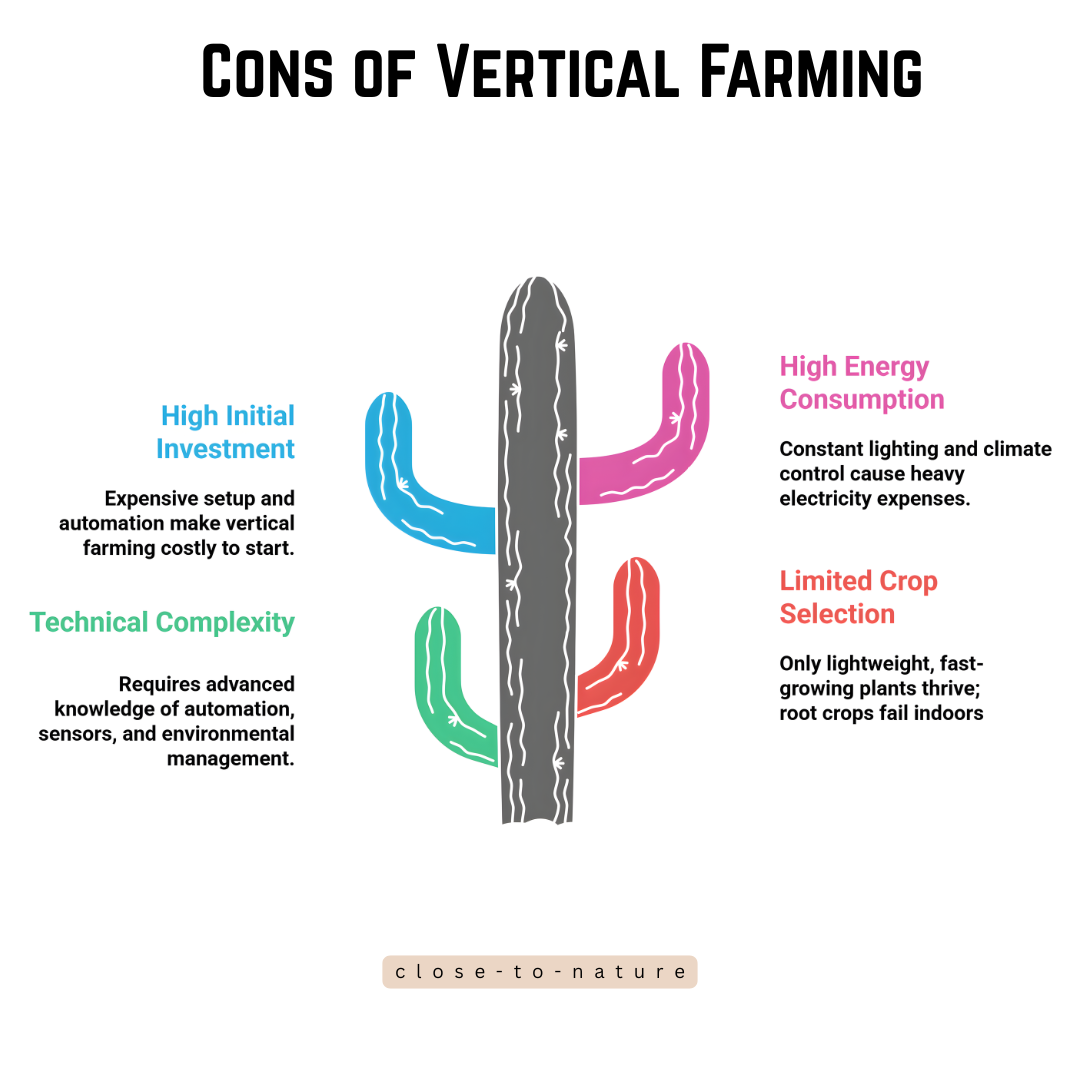
Conclusion
In conclusion, hydroponic farming and vertical farming both represent the future of sustainable agriculture. While hydroponics focuses on efficient, soil-free cultivation using nutrient-rich water, vertical farming builds upon this by optimizing space through layered growth.
Together, they offer eco-friendly solutions for urban food production, conserving water, reducing land use, and ensuring year-round harvests.
As technology advances, these innovative systems will continue transforming how we grow and access fresh, local produce worldwide.
I trust you enjoyed this article on Hydroponic Farming vs Vertical Farming. Please stay tuned for more inspiring guides, helpful tips, and ideas to help you live closer to nature every day.
Take care!
— JeannetteZ
💬 Your Opinion Is Important To Me
Do you have thoughts, ideas, or questions? I’d love to hear from you. Please leave your comments below or email me directly at Jeannette@Close-To-Nature.org.
📚 More Nature-Inspired Reads
Explore more ways to connect with nature, nurture your pets, and live in harmony with the world around you 🌿
